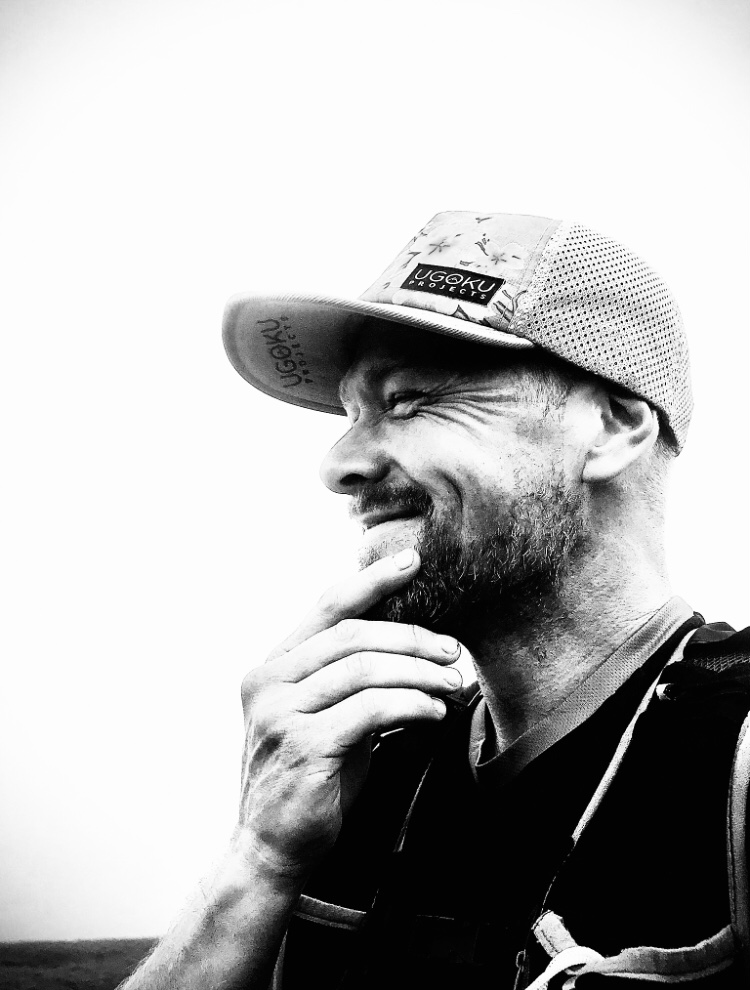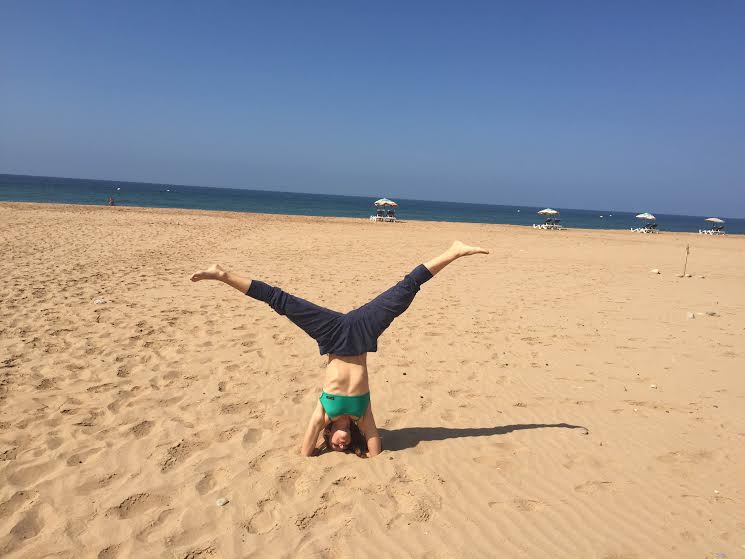It’s noticeably cold in the engineering workshop. But today I’m keeping warm in my overalls by frantically marking out and cutting 25mm thick sheets of blue industrial nylon plastic.
I’m weighing them and putting them into Jiffy bags to post out to some of my coaching clients.
The end product of today’s engineering project is a lesson in specificity! But we’ll come back to that project in a bit.
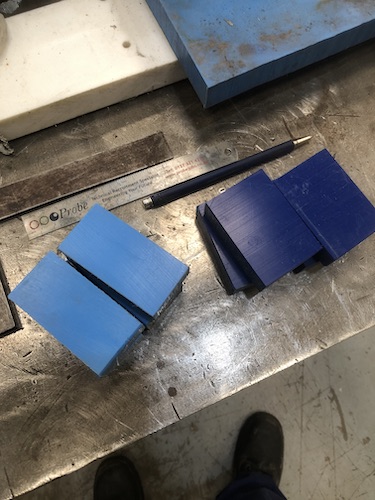
Specificity
Say it out loud, ‘specificity’.
Now say it again, over and over. It’s like red lorry/yellow lorry from when you were a kid. A tongue twister!
I once spent 10 minutes (possibly an exaggeration) recording and re-recording an Instagram story dealing with ‘specificity’. It was on a narrow rocky single track barely wide enough to get one trail shoe on let alone run on with two feet!
But it wasn’t the terrain that was causing the edit/re-edit of the video. It was the fact that I couldn’t for the life of me get the word to come out properly on camera. Spits of ‘spefertifiny’ or ‘specifitony’ rang out in the valley.
To be fair, by this point I was deep into my hill repeat workout that I like to do on Thorpe Cloud and the surrounding hills of the Dovedale valley. So it was no surprise that exhaustion and brain fog had something to do with me fumbling my words into my phone.
To the hikers on the river path below I most likely, (definitely) looked and sounded like a lunatic. I can only imagine what they thought I was up to!
So what was I up to?
Well, I was trying to show that you don’t need to live in the French alps to train for races like the UTMB (Although it does help). You can find terrain locally that mimics the specifics of even the wildest ultramarathons around the world. Even if it’s only a short and steep section of single track that matches the averaged elevation gain and loss of the course you’re targeting. You can get the benefit from it in your training by focusing on the specifics of a race.
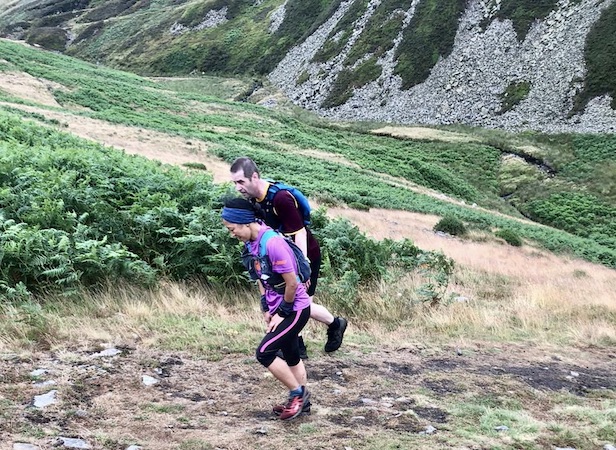
Going the extra mile
As an engineer by day and ultra running coach by night, something I pride myself in is going the extra mile in preparing my clients for their upcoming races. Ultras can be a complex problem, but like all problems engineering or otherwise, problems can be solved. Especially with enough time and focused preparation.
Part of that preparation is specificity.
You can do all the miles and workouts in the world, but if you don’t plan and execute runs and workouts on terrain, or in conditions that you will encounter in your ultramarathon, you may find yourself coming up short come race day.
Specificity for ultra trail races can come in various guises, but I’ve found over the years that a simple approach targeting just a couple of areas really works.
Firstly, the golden rule for a long range plan leading up to a race is to “train the least specific thing furthest out from the race”.
Meaning; if for example you’re training for a long mountainous ultra on technical terrain, doing track interval workouts in the month leading up to that race will not give you any benefit come race day! True, you might have the best VO2max values of anyone on the starting line, but that won’t help you when your quads are screaming at you while descending the backside of a rocky mountain trail at break-neck speed!
What will help in that race is your body’s ability to utilise muscle memory. For it to remember a task and repeat it like it’s something it’s done every day. Specificity in that case would be to have done the speed work block months before the race. Then focus on terrain specific workouts and back to back long runs in full race kit on the race course if possible. Or if not available, find trails that closely resemble the race and the conditions you will encounter on race day.
In a simplistic way, all training boils down to two variables; overload and adaption. With the overload happening in the workout and the adaption happening in recovery. No need to make it any more complicated than that! Structured training pushes your multiple physiological, musculoskeletal and substrate utilisation systems so that they can adapt and remember. Then the next time you do it, it’s easier. Simple. The training effect, in layman’s terms.
The same can be said broadly speaking with specificity. If you put yourself in a specific race environment during training, whether that be running rocky trails in the night with a head torch, power hiking up steep inclines in foul weather in full race kit or burying yourself in the final miles of a progressive long run to simulate racing on tired legs. What you do in specific training counts 100%.
If you can stay calm and focused in a race no matter what changes or goes wrong and let’s face it, something usually goes wrong! Preparing for all eventualities gives you an advantage over the next guy or gal.

Fake plastic trackers
So, that brings me back to my little engineering project.
The task I’ve set myself on this cold winters day, is to replicate the trackers used by Open Tracking for this years summer and winter Spine races. Size for size and weight for weight. All out of 25mm industrial plastic sheet.
Lunacy? Well it might seem that way but this is a lesson in specificity!
I’ve used these trackers, many of us have in various trail and ultra races around the world. I know from personal experience that having a lump of plastic haphazardly strapped to you with electrical tape doesn’t always sit comfortably. In fact, having a lump of plastic attached to your race pack for 268 miles of the Pennine Way can be very, very uncomfortable! Especially when it’s attached to a strap that moves about and digs into your shoulder or back for hours on end.
In January I had the privilege to see this happen for myself in real time at the 2022 Montane Winter Spine Race.
I was part of the team at Edale attaching the race trackers for the Sprint, Challenger and full Spine races. Even with spot on training from the guys at Open Tracking, the task of attaching the tracker to the multitudes of varying shapes and sizes of packs in a ‘comfortable’ position was no easy task.
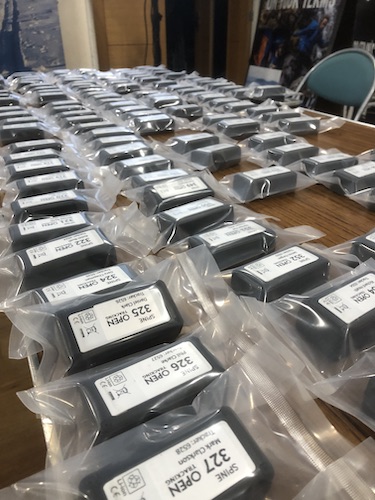
Don’t get me wrong, I know the Spine is ‘Britain’s most brutal race’ but the idea of preparing for an epic race and the specificity that comes with such an adventure also applies to our kit as well as our training, right?
We spend hours in our full race kit getting used to every outcome and condition that’s possible. But I’ve also seen the state runners have been in when they’ve reached even the first couple of checkpoints of the Spine. Their tracker has twisted and moved from it’s original position and is now digging into them, giving them absolute grief!
One such case was of a high profile racer (who will remain anonymous) The tape on her tracker had screwed up into a thin rope-like torture device and the tracker had moved from its original position and was now digging into her shoulder causing her to wince in pain!
This wasn’t a one off by any means. During my 5 days as a race volunteer I saw numerous competitors come through the checkpoint with complaints of ‘tracker fatigue’. Hours of shifting their packs about and tightening of straps here and there to get some rest bite.
An expected outcome for such an epic ultra? Maybe, but could it have been prepared for through specific training?
Could a 75x39x25mm lump of industrial plastic fashioned into a dummy tracker strapped to their packs during training runs, help prepare a runner for hours of type 2 fun on the Pennine Way?
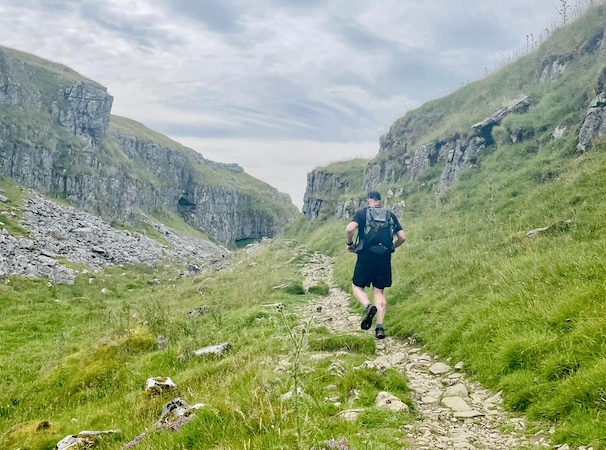
Well there’s no harm in trying is there? Ultra-runners, especially the fast ones are all about marginal gains. Whether it’s from training or from the comforts brought by small, packable lightweight kit. If you don’t believe me, check out the official Spine Facebook group. It’s full of advice on lightweight gear and the cheapest price on the net. If there’s an advantage to be had they either know about it or they want to know about it!
Actually, while we’re on the subject of the Spine Facebook group, in preparation for this article I innocently asked for some experiences or stories of tracker fatigue/rub during the race and the responses astounded me!
From comments like ‘what a great question, I hadn’t thought of that!’ to comments bordering on offensive that someone would ever even think to complain about a measly tracker rubbing enough to notice, let alone cause someone to DNF.
Now I know Spiners are a tough breed. But what’s clear from my mini questionnaire, is that tracker rub isn’t an issue for you in a race, if tracker rub isn’t an issue for you in a race!
Great news if that’s you, but maybe for those that do have issues what would be the harm in incorporating some tracker specific training?
Off the fence
Still on the fence about specificity?
Recently I heard Jim Walmsley interviewed on a podcast about his lack of success at UTMB. The presenter asked him why he hasn’t managed to win or take a podium place at arguably the biggest trail ultramarathon in the world?
Jim had come to a conclusion. He went on to relate that he had struggled with the specific terrain in Europe and how the cold and long hours of darkness had got to him. He realised that living in Flagstaff Arizona was the ideal place to prepare for hot fairly runnable trails races like Western States. It wasn’t ideal however for races with cold, wet and rocky terrain in the long dark hours of the night.
He even admitted that he hadn’t even run with a head-torch at night or had the need to don extra layers in preparation for cold and wet nights of running.
What was the solution?
Specificity!
Over the summer Jim and his other half Jess have upped sticks and moved to France. Jim knows that to get good at UTMB, he needs to get good actually at UTMB very much in the physical sense. He needs to train on the course, with the weather, terrain and even do it with his competitors who already live in the Chamonix valley.
Will this approach work? Will specificity bring home the UTMB win that Jim craves so badly?
More importantly (to me) will access to this low tech bit of kit help my coaching clients that are competing in the Spine race this year?
Well the jury’s still out on that one. I’ll have wait until after the race to find out the results of my engineering/coaching hybrid project!
But for now, back to the Jiffy bags!
About the author:
“I absolutely LOVE running! In all its forms. Whether it’s pushing hard for a 5K time, pushing to the limit on a marathon or 50k, or just meandering with intent across the Peak Districts trails and moors, I will always have a smile on my face.
Aside from coaching runners like you, I am also a writer for running mags, host of the Understanding Ultra Podcast, and founder of the Free Social Trail Run in the Peak District.
